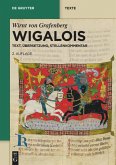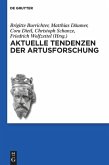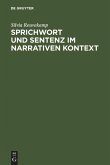This is the first introduction in German to the Wigalois by Wirnt von Grafenberg, written around 1200. The introduction is written for the general reader, with a target readership both of students of medieval German literature and of a wider audience of those seeking an initial approach to the text. Each section of the romance is summarized exactly, the most important intertextual references are pointed up, and each scene is located within the overall context of the text using the findings of most recent research. In addition, this introduction provides information on the author, transmission of the text, its editorial history, and the structure and most important complexes of motifs in the Wigalois. Particular emphasis is placed on the productive medieval reception of the romance and its most important representatives, with the Erfurt version discovered in 2006 being presented for the first time. The introduction concludes with structured bibliographies and an index.
Das vorliegende Buch ist die erste deutschsprachige Einführung in den um 1220 entstandenen Wigalois Wirnts von Grafenberg. Sie liest den lange zu Unrecht als "epigonal" disqualifizierten Artusroman als absichtsvollen Beitrag zum Gespräch über die rechte Lebensführung des Adels, das mit den Romanen Hartmanns von Aue und Wolframs von Eschenbach an das deutsche Publikum herangetragen worden war. Jeder Abschnitt wird präzise zusammengefasst, die wichtigsten intertextuellen Referenzen werden aufgezeigt und die jeweilige Szene vor dem Hintergrund der neuesten Forschung in den Romanzusammenhang eingeordnet. Darüber hinaus bietet die Einführung Informationen zu Autor, Überlieferung (Handschriften), Editionsgeschichte, Aufbau und den wichtigsten Motiv-Komplexen des Wigalois . Besonderes Gewicht wird auf die produktive mittelalterliche und frühneuzeitliche Rezeption des Romans und ihre wichtigsten Vertreter (Ulrich Füetrer, Wigoleis vom Rade , Ritter Wieduwilt ) gelegt, wobei der Öffentlichkeit erstmals die 2006 aufgefundene strophische Bearbeitung Dietrichs von Hopfgarten (1455) vorgestellt wird. Strukturierte Literaturverzeichnisse und ein Register runden die Einführung ab.
Das vorliegende Buch ist die erste deutschsprachige Einführung in den um 1220 entstandenen Wigalois Wirnts von Grafenberg. Sie liest den lange zu Unrecht als "epigonal" disqualifizierten Artusroman als absichtsvollen Beitrag zum Gespräch über die rechte Lebensführung des Adels, das mit den Romanen Hartmanns von Aue und Wolframs von Eschenbach an das deutsche Publikum herangetragen worden war. Jeder Abschnitt wird präzise zusammengefasst, die wichtigsten intertextuellen Referenzen werden aufgezeigt und die jeweilige Szene vor dem Hintergrund der neuesten Forschung in den Romanzusammenhang eingeordnet. Darüber hinaus bietet die Einführung Informationen zu Autor, Überlieferung (Handschriften), Editionsgeschichte, Aufbau und den wichtigsten Motiv-Komplexen des Wigalois . Besonderes Gewicht wird auf die produktive mittelalterliche und frühneuzeitliche Rezeption des Romans und ihre wichtigsten Vertreter (Ulrich Füetrer, Wigoleis vom Rade , Ritter Wieduwilt ) gelegt, wobei der Öffentlichkeit erstmals die 2006 aufgefundene strophische Bearbeitung Dietrichs von Hopfgarten (1455) vorgestellt wird. Strukturierte Literaturverzeichnisse und ein Register runden die Einführung ab.








